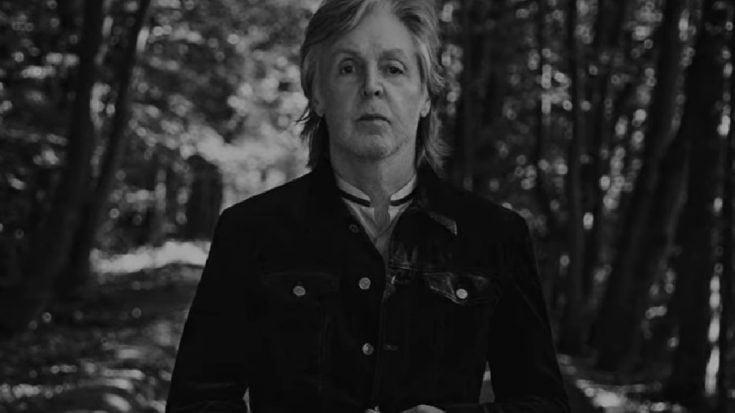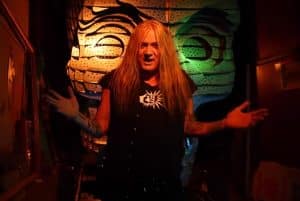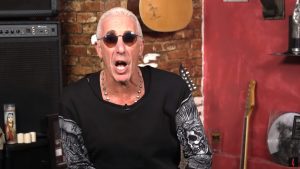The Infamous Music Scandals In The 80s

via breathless345 / YouTube
In the intoxicating cocktail of fame, fortune, and youthful exuberance, the music industry has served as a breeding ground for scandalous tales that captivate public attention.
When an exceptionally talented young artist is thrust into the limelight and handed a lavish lifestyle on a silver platter, the combustible mix of creativity and excess often leads to headline-grabbing controversies.
Take, for instance, the flamboyant ’80s, an era synonymous with extravagance and hedonism. While social media platforms like Twitter were yet to dominate the scene, the gossip mills were alive and well, churning out stories that both titillated and shocked the public.
In this era of neon lights and synthesizers, musical icons like Ozzy Osbourne, Madonna, and Lionel Richie became not only purveyors of sonic innovation but also central figures in scandals that etched their names into pop culture history.
Paul McCartney Faced Detention in Japan for Drug Possession
In 1980, The Beatles’ Paul McCartney found himself in legal trouble in Japan for marijuana possession. Caught with a substantial half pound of the substance at Tokyo’s Narita Airport, Macca faced nine days in the Tokyo Narcotics Detention Center.
Despite his insistence that the drugs were for personal use, authorities remained skeptical. Fortunately, he was eventually released, promptly deported and spared a potential smuggling charge that could have led to a seven-year sentence.
The incident, recounted by the bassist in a deleted scene from Carpool Karaoke on The Late Late Show With James Corden, highlighted the gravity of the situation. The musician revealed that he faced the prospect of “seven years hard labor”, a potential sentence suggested by fellow inmates during his brief stint in detention.
Ultimately, McCartney’s celebrity status likely played a role in his release, preventing what could have been a prolonged and internationally sensational legal battle.
Ozzy Osbourne’s Infamous Bat-Biting Incident
Renowned for his penchant for controversy, Black Sabbath’s frontman, Ozzy Osbourne, has a history marked by outrageous escapades. From an arrest for urinating near the Alamo in 1982 to almost causing harm by hurling a TV out of a hotel window, Osbourne’s life is a tapestry of wild tales, including admitting to shooting at birds and cats during the pandemic lockdown.
While some of the stories surrounding Osbourne may veer into myth, one moment stands out as undeniably real — the infamous occasion in 1982 when he bit the head off a live bat during a live performance.
In what is arguably the quintessential Ozzy moment, the bat-biting incident unfolded onstage, capturing the essence of Osbourne’s unpredictable nature. However, the shocking act wasn’t intentional. Osbourne later clarified on David Letterman’s show that he believed the bat tossed onstage was a rubber prop, part of a playful joke initiated by someone in the audience.
Despite the surreal and macabre nature of the bat-biting episode, it remains a vivid and real chapter in Ozzy Osbourne’s legacy, symbolizing the boundary-pushing and unpredictable trajectory of his rock and roll persona.
Marvin Gaye Fatally Shot by His Father
Despite a string of hits, including the Grammy-winning “Sexual Healing”, Motown icon Marvin Gaye found himself facing financial woes, mental health struggles, and substance abuse, leading him to live at home in 1983.
Compounding these challenges was a strained relationship with his father, Marvin Gay Sr., an abusive alcoholic who may have harbored jealousy toward his son’s success. The tensions between father and son escalated, culminating in a deadly incident on April 1, 1984.
Reports indicate a history of growing conflicts and assaults, with police responding to a “verbal dispute that led to a physical altercation” that, tragically, ended with Marvin Gay fatally shooting his own son during this altercation.
In the aftermath, Frankie Gaye, Marvin’s brother, recounted the heartbreaking scene in Marvin Gaye: My Brother, revealing the singer’s final words as he lay dying: “I got what I wanted … I couldn’t do it myself, so I made him do it.
Vince Neil’s Tragic Drunk Driving Incident
In the midst of the hedonistic ’80s metal scene, Mötley Crüe, known for their wild antics, faced a somber turn of events on December 8, 1984. The band had taken Hanoi Rocks, a Finnish glam rock group, under their wing during the latter’s inaugural U.S. tour.
Mötley Crüe’s lead singer, Vince Neil, and Hanoi Rocks’ drummer, Nicholas Dingley (Razzle), both already intoxicated, decided to drive to a liquor store for more alcohol. Speeding through Beverly Hills, Neil’s car collided with another vehicle. Neil survived the crash, but tragically, Razzle, aged 24, lost his life at the scene.
Recalling the incident, Hanoi Rocks guitarist Andy McCoy described the search for Neil and Razzle, discovering the accident scene and recognizing Razzle’s hat on the street. Neil’s subsequent admission of guilt and remorse came in a 2005 interview with Blender magazine, where he revealed writing a $2.5 million check for vehicular manslaughter.
Despite acknowledging that he deserved prison time, Neil served only 30 days in jail, a leniency he attributed to the power of wealth, leading to a sense of bewilderment about the situation’s outcome.
Tipper Gore’s Impact on Music Content Warnings and the Sticker Controversy
According to Business Insider, future second lady Tipper Gore was spurred into action after discovering explicit lyrics on a Prince album her child had purchased. This led her to spearhead the Parents Music Resource Center (PMRC) in 1985, advocating for content warnings on music deemed inappropriate for children.
The ensuing 1985 Senate hearing, commonly referred to as the “rock-porn” hearing, featured a clash between Gore and PMRC against musicians such as Frank Zappa, John Denver, and Dee Snider of Twisted Sister. Despite opposition, the PMRC succeeded in having parental advisory stickers placed on albums with mature content.
Decades later, Gore maintained her stance, commending artists and record companies for facilitating conversations between parents and kids about lyrics and values. In a 2015 interview with Rolling Stone, she expressed support for the continued use of advisory labels.
Interestingly, not everyone viewed the stickers negatively. As MTV explains, the warnings had an unintended consequence – making artists appear cool and dangerous, inadvertently encouraging kids to purchase the records.
Judas Priest and the Subliminal Messaging Controversy
Amidst the satanic panic that gripped 1980s America, metal bands like Judas Priest faced scrutiny for their incorporation of evil imagery. The New York Times noted the clash between the conservative mainstream and metal culture, fueled by the widespread belief in devil worship.
The tension reached a tragic peak on December 23, 1985, when Raymond Belknap and James Vance attempted suicide, attributing their actions to alleged subliminal messages hidden in Judas Priest’s lyrics. While Belknap succumbed to his injuries, Vance survived but was left disfigured.
Grieving families accused Judas Priest of brainwashing the young men through subliminal messages in their music. Despite the absence of concrete evidence linking the band to the suicides, the families pursued legal action. However, the case was eventually dismissed, as the band vehemently denied any responsibility, emphasizing the lack of proof for the alleged subliminal influence.
Reflecting on the controversy years later, Judas Priest frontman Rob Halford, in an interview with Metro UK, expressed frustration at the baseless accusations. He highlighted the absurdity of claims that listening to their music in a specific way could lead to self-harm, drawing parallels to similar accusations faced by fellow metal artist Ozzy Osbourne with his song “Suicide Solution”.
Lionel Richie’s Turbulent Marriage and a Violent Confrontation
Celebrity marriages often face intense scrutiny, and Lionel Richie’s union with Brenda Harvey-Richie proved no exception. The duration of celebrity marriages is notorious for its brevity, and the fallout from celebrity divorces is often laid bare in tabloid headlines.
In Lionel’s case, the unraveling of his marriage took a particularly unfortunate turn when Brenda discovered him with family friend Diane Alexander at the latter’s home. Outraged by the affair, Brenda confronted Lionel, kicking him before unleashing a brutal assault on Diane.
According to a People article from the time, the chaotic scene was vividly described by neighbors who heard the commotion. Lionel fled the scene, seeking refuge in the police, while Brenda continued to unleash her fury on Diane.
The violent episode shattered glass and sent furniture crashing, leaving witnesses stunned by the lack of civility in the unfolding drama. Shockingly, even as Brenda was being handcuffed by the arriving officers, she pleaded for help from Diane, creating a dramatic and tumultuous tableau of a celebrity marriage in crisis.
https://twitter.com/cornbread_fed84/status/1366837853284630535
Tragedy at Guns N’ Roses Donington Concert
In August 1988, during the Monsters of Rock festival in Donington, England, Guns N’ Roses faced a devastating incident that resulted in a human crush, leaving dozens of fans injured and tragically claiming the lives of two individuals. The festival’s head of security, Mick Upton, attributed the disaster to a combination of factors.
Guns N’ Roses’ stage, located at the bottom of a slope, created a natural amphitheater that improved visibility but also contributed to the chaotic crush. The band’s explosive reputation and surging popularity raised concerns about the potential for uncontrollable crowds.
Additionally, adverse weather conditions turned the ground into a slippery, muddy terrain. Although singer Axl Rose attempted to calm the crowd by stopping the show, the efforts proved insufficient.
According to music journalist Steve Carr, writing for Every Record Tells A Story, the Donington Disaster led to the cancellation of the festival the following year, prompting necessary crowd control changes. Upton’s report emphasized the importance of a team approach to crowd management.
Jethro Tull’s Surprise Best Metal Recording Win in Grammy Upset
In 1989, the Grammys introduced a new category, Best Hard Rock/Metal Recording, with Metallica widely expected to clinch the award for their thrash metal prowess showcased in … And Justice For All.
However, to everyone’s astonishment, the victor turned out to be Jethro Tull, a band considered an improbable nominee due to their distant association with the metal genre. Frontman Ian Anderson revealed that the record company deemed their chances so slim that they considered skipping the ceremony altogether.
As recounted by Alice Cooper to Classic Rock, the moment of truth during the awards ceremony led to a two-minute pause before laughter erupted. Cooper recalled the disbelief as he announced Jethro Tull as the winner, a choice that seemed like a joke to many.
Metallica’s drummer, Lars Ulrich, humorously acknowledged the unexpected turn of events in 1992 when their self-titled Black Album secured the award, thanking Jethro Tull for not releasing an album that year.
Madonna’s “Like a Prayer” Video Sparks Controversy and Backlash
In 1989, Madonna, known for pushing boundaries, stirred considerable controversy with the release of the music video for “Like a Prayer”. Initially debuted on Entertainment Tonight, the video depicted a murder, addressed racism with burning crosses, and featured religiously provocative imagery, including stigmata.
Notably, it included an explicit scene suggesting inappropriate actions in a church. Due to its late arrival, Entertainment Tonight could only edit out the most shocking parts for its airing, but when the uncensored video hit MTV, it ignited genuine outrage.
Religious organizations, unsurprisingly, were among the most vocal critics of the video, condemning Madonna and any entity associated with its broadcast. Roman Catholic historian Roberto de Mattei deemed the video a “blasphemy and insult” for portraying immoral acts within a church.
Even Pepsi, a brand featuring Madonna in commercials, faced repercussions and had to sever ties with her due to the intense backlash, as reported by AP News. However, the controversies surrounding “Like a Prayer” did not derail Madonna’s career, with the song earning a nomination for MTV Video of the Year.
Milli Vanilli’s Infamous Lip Syncing Scandal
In 1989, during a performance of “Girl You Know It’s True”, R&B duo Milli Vanilli, comprised of Rob Pilatus and Fabrice “Fab” Morvan, faced a critical moment when a track malfunction revealed their lip-syncing.
This incident, as reported by AP News, marked the beginning of a scandal that exposed the entire act as fraudulent. While lip-syncing is not uncommon, what set Milli Vanilli apart was the revelation that they hadn’t sung a single word on their albums, uncovering a deceptive practice that went beyond live performances.
The team managing the duo had gone to great lengths to conceal the fraud, even hiring dialect coaches to help Pilatus and Morvan adopt accents closer to those heard on the tracks. This measure aimed to prevent suspicions during interviews. However, their efforts failed, leading to a public scandal
Stripped of their Grammy by the National Academy of Recording Arts & Sciences, Pilatus and Morvan, disgraced and humiliated, claimed victimhood. They asserted that poverty had driven them to participate in the deception, highlighting their dire financial circumstances at the time.











